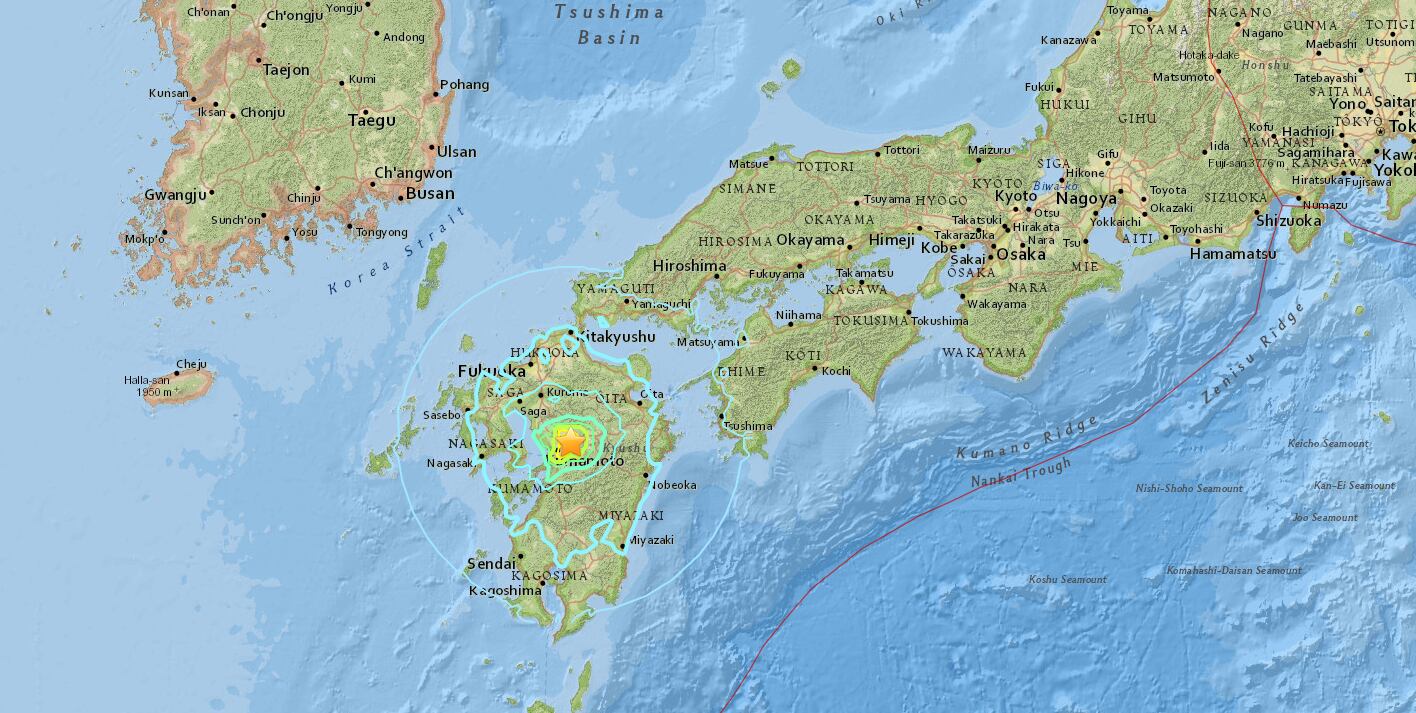Editor's note: This story was originally published April 17, 2016, at 9:25 a.m. EST.
An undisclosed number of U.S. Marines are assisting emergency crews in southern Japan after two deadly earthquakes have plunged the region into chaos.
At least four MV-22 Ospreys — with four others on standby — have joined the relief effort, according to a news release distributed by the U.S. military on Sunday. The aircraft are assigned to Marine Medium Tiltrotor Squadron 265, which is part of the 31st Marine Expeditionary Unit.
The powerful earthquakes struck southern Japan's Kumamoto region on Thursday and again on Saturday, leveling homes and other buildings, and cutting off electricity, water and other basic services throughout several towns and villages.
Up to 40 people are dead, according to the Marine Corps' news release. Hundreds more are injured, some very seriously.
It is unclear how many still are trapped in the rubble, but tens of thousands have been displaced.
The Marines were sent to Japan from the Philippines, where they had been participating in a training exercise. They flew to a U.S. air station in Iwakuni, in mainland Japan, after a brief refueling stop at the Marine Corps' primary facility on the island of Okinawa, officials said.
It's not immediately clear how the Marines and Ospreys will be used once they integrate with the relief effort. The news release indicates only that they will provide aerial support.
Ospreys are capable of flying like helicopters and airplanes. They are used to haul people, ground vehicles and other heavy equipment. Typically, each aircraft has two pilots and two crew chiefs, who oversee the passenger cabin, and help to load or offload equipment and supplies while on the ground.
"The situation is currently developing," Capt. Jennifer Giles, a spokeswoman for the Marines, told Military Times via email. "I will have more information tomorrow."
Hundreds of Japanese military personnel also have responded. The Associated Press reported Saturday that 1,600 troops were in the region delivering blankets and other supplies to the shelters that have been established.
On Sunday, the U.S. military published photos and video of the Marines' aircraft being prepared to depart Iwakuni, approximately 170 miles northeast of the disaster zone.
This is a familiar drill for the Marine Corps, one for which the service trains routinely and extensively. Marines and other American military personnel based in the Asia-Pacific region have been called to help after numerous natural disasters.
Notably, after back-to-back earthquakes in Nepal last spring killed an estimated 9,000 people, the U.S. military dispatched a task force numbering 500 along with a variety aircraft. They flew search-and-rescue missions, delivered food, water and other supplies, and helped repair runways and other damaged infrastructure.
Tragically, 13 people died — six Marines, two Nepalese soldiers and five injured civilians — when a Marine Corps UH-1Y Huey helicopter crashed in bad weather during a medical evacuation.

U.S. Geological Service map of the Japanese earthquake.
Photo Credit: USGS.gov
More than 40,000 U.S. troops and civilians are stationed throughout Japan. There have been no reports that American personnel were injured in the earthquakes, nor any indication that American facilities were damaged.
In a separate news release Sunday announcing the Marines' deployment, Air Force Lt. Gen. John Dolan, the commander of all U.S. forces in Japan, offered a brief statement.
"We are working closely with the government of Japan to provide assistance and support," Dolan said. "To the people of Japan and the region affected by this tragedy we send our heartfelt sympathies. The men and women of U.S. Forces Japan stand with you during this difficult time."





